Salt Glossary
Flake Sea Salt
Flake sea salt crystals are thin, light, dry, and crisp. Some are pyramid-shaped while others are like tiny shells. They vary in size and, like snowflakes, no two are alike. Flake salt crumbles easily, unlike crystals, and adheres well to finished dishes. It dissolves quickly and is best sprinkled on food right before serving. Flake salt is a favorite with salad, vegetables, and desserts.
Fine and Coarse Crystal Sea Salt
Traditional sea salt that is hand-harvested, solar evaporated, unrefined, and milled to a fine, medium, or coarse grain. These are most of the sea salts in the world and range from dry to moist, white to grey, and are all-purpose in their use.
Mined Sea Salt
These are hard crystals with very little moisture, coming from the land as opposed to from the living ocean. These are the Himalayan Pink Salt, including the rock salt, Peruvian Pink Salt, Bolivian Rose Salt (found in our Pink Salt Collection).
Grinder Sea Salt
Typically any dry, coarse grained sea salt is good for use in a grinder. Larger grained moist salt may also be used in a grinder. Always use a grinder with a ceramic grinding mechanism as metal, even stainless steel, will corrode over time.
Flavored/Blended Sea Salt
Any sea salt, generally fine or medium grain, blended with herbs, spices, citrus, or other flavorings. Used as finishing salt. These are handy additions to the salt repertoire as they can transform unadorned food into a special dish.
Smoked Sea Salt
Fine or coarse sea salt that is either cool or warm smoked over a fire to obtain a naturally smoked flavor and pleasing brown color. A perfect seasoning where a rich smoke flavor and aroma is desired. Loved by vegetarians for a non-meat smoky accent to soups and stews. Delicious with meats, seafood, eggs, potatoes, chocolate desserts, and as a rimmer for dark beer.
Caviar and Pearl Sea Salt
Caviar sea salt collects in the corners of the salt pans on windy days. Small pieces of salt break off the salt crystals as they form on the surface of the brine.
Agariya
Agariya is the name for the Indian salt workers. They help with the elaborate manual work of salt extraction in India.
Alexander salt
Alexander salt is a name for the natural reddish crystal salt from Pakistan, also known as the Himalayan salt. It goes back to Alexander the Great, who, in his notes, went on his campaign for the Indian front, 350v. BC described the salt deposits there. The mining of crystal salt began there and was brought to Europe by caravan.
Road salt
De-icing salt, or more commonly known as road salt, is sodium chloride, which is used to thaw snow and ice.
Bamboo Salt
Bamboo salt is a traditional salt from Korea, which was originally discovered by Buddhist monks and used to flavor lean food and as a healing salt. In the complex production process, salt is filled into a bamboo tube and burned in one to nine processes.
Epsom salt
or rather magnesium sulfate heptahydrate, has little in common with the general salt. Epsom salt is used as plant fertilizer. It gets its name from the bitter taste. Magnesium sulfate heptahydrate is formed on the walls of limestone caverns or near volcanic springs. Epsom salt has a medicinal effect and is occasionally used for starvation diets. Because of its side effects, caution is advised especially in children and adults with impaired kidney function.
Borehole soling
Borehole soling is used in the extraction of saline salt. Here, holes are drilled in salty rock layers. Fresh water is pumped into these holes. The water removes the salt from the rock layers and is then pumped back to the surface as brine.
Danish smoked salt
cold smoked over beech in a 160 hour process. The smoked salt is becoming increasingly popular in Europe with top chefs.
Diet salt
Diet salt is a special sodium-free salt that is used as a substitute for table salt in a diet or for high blood pressure. Chemically, diet salt is potassium chloride, normal table salt consists of sodium chloride.
Thorn stone
Thorn stone is the deposit that is formed in a graduation tower on the thorny scrub, mostly black thorn, through deposits of contaminants such as plaster and lime, thus ensuring the typical gray or brownish appearance of the graduation tower.
Duniella Salina
Duniella Salina is an algae that grows in the salt marshes and turns the fleur de sel or salt pink.
Emser salt
Emser salt is the healing salt from the spa town of Bad Ems. It is extracted from the hot mineral springs by evaporation. The Bad Emser salt is mainly used in the treatment of respiratory diseases. By rinsing the nose with the Emser salt, the mucus dissolves and the sinuses become free again. The most famous product is the Emser pastilles, which are used for mild sore throats or hoarseness.
English salt
English salt is magnesium sulfate heptahydrate and therefore another name for Epsom salt. English salt is used as plant fertilizer, tastes bitter and has nothing to do with ordinary salt.
Moist salt
Moist salt is thawing or de-icing salt. Moist salt is dry de-icing salt moistened with brine. This enables a far better effectiveness of the road salt with a smaller amount and also the high blowing losses like with the dry spreading material do not occur.
fleur de sel
French for “salt flower” or “queen of salts”. The fleur de sel appears in special weather conditions on the water surface of the sea salt salt pans. The structure of the fleur de sel is particularly crispy and has a high residual moisture.
Flos Salis Flos Salis is Latin and means “best salt”. The Roman scientist Pliny the Elder (1st century AD) tells in his natural history book “Naturalis Historiae” on 38 pages about the sea salt and its importance in Roman culture. With Flos Salis he describes the now known Fleur de Sel .
Fumee de Sel
Fumee de Sel is fleur de sel that oak barrels are cold-smoked over Chardonnay wine. The Fumee de Sel takes on a mild smoky taste with a light wine note. In addition to the Fumee de Sel, the Fleur de Sel Chardonnay is also commercially available.
graduation tower
A graduation tower is a system that was invented in the 16th century and which helps salt production to increase the brine concentration naturally through evaporation. The weakly concentrated so-called “thin brine” trickles through a wall of stacked scrub (mostly black thorn) several meters high. The water evaporates due to wind and sun and the concentration of the brine increases before it is boiled in the boiling pans. At the same time, this process also has a cleaning effect on the brine. Impurities such as lime and gypsum stick to the black thorn. Today graduation towers are mostly only operated in spas. As the brine drizzles down, the air is enriched with salt.
Halit
Halit is derived from the Greek words “halo” for salt and “lithos” for stone. Halite is another name for rock salt. Halite belongs to the mineral class of simple halides. Halite is of the chemical composition NaCl. It crystallizes in a cubic, cube-like form. Halite is mainly found in Central Europe in Berchtesgaden, Reichenhall, Hall in Tirol or Hallstatt. The name part “Hall” of the places derives from Halit.
Hickory salt
Hickory salt is sea salt that has been smoked over hickory wood. Hickory salt is typical of American cuisine and is often used in rustic kitchens. Hickory salt is ideal for grilling.
Hunza crystal salt
Hunza crystal salt is one of several names for the pink Himalayan salt and is mainly used commercially. The salt does not come from the Himalayas, but from one of the largest salt deposits in the world in Pakistan. The name Hunza goes back to a Pakistani tribe, the Hunzukuc. Hunza crystal salt is a rock salt that is 98 percent sodium chloride. Other components are gibs and iron oxide impurities, which give the salt its special pink color. The salt is mainly offered in health food stores, natural food or esoteric shops.
iodized salt
Iodized salt is a table salt that is enriched with iodate. The aim of the enrichment is to ensure the basic requirement of iodine for the population. Salt is particularly suitable because it is used with almost every dish. A iodine deficiency can affect the way the thyroid works. In Germany, the populations who live in the south of the country, like in Bavaria, are particularly at risk. The iodine-poor soil and the rare consumption of saltwater fish contribute to a deficiency here. Sufficient iodine should be taken into account, especially during and after pregnancy.
Juk-Yom
Juk-Yom is the Korean name for bamboo salt . The special production of this salt was discovered by the Buddhist monks thousands of years ago. Salt is poured into a bamboo cane and burned over pine wood one to nine times.
Seasoned Salt
Herbal salt is a sprinkled mixture of herbs such as thyme, basil, rosemary, lavender and sea salt. It is often used to season soups, vegetables or cold dishes.
Kaiser salt
Imperial salt, or also known as king salt, or diamond salt, stands for rock salt. Since salt used to be a valuable commodity and was mostly reserved for the upper classes, such as the nobles, kings or emperors, these names prevailed for salt. Imperial salt consists of over 97% sodium chloride.
Table salt
Table salt is the salt obtained by boiling or evaporating brine or sea water. This manufacturing process is mainly used in industrial salt production in salt pans. Table salt is the normal / ordinary commercially available and packaged in small portions and can be used for everyday food.
Crystallization
Crystallization refers to the hardening of a solution into a solid, crystalline state. The higher the pressure during crystallization, the denser the salt and crystal salt will be.
crystal salt
Like rock salt, crystal salt is mined or dissolved out of the salt pans by water. Crystal salt is characterized by its higher density than normal salt. The more transparent the salt is, the more valuable the crystal salt is. Crystal salts can sometimes have a pink color due to trapped iron oxide.
Las
Las, also known as lasse, is a tool used by French salt farmers. The alley consists of a rectangular board that is attached to a long wooden handle. It is mainly used when harvesting the Sel Gris. The salt farmer carefully pulls the salt, which has crystallized out at the bottom of the oeillet, into salt piles at the edge of the basin.
lick stone
A lick stone, or salt lick stone, is a halite (salt stone) that is used for farm animals such as cows or horses, pets or small animals. The animals can absorb important minerals by licking the stone. With horses and other animals, the lick stone is also often used in stables as an employment opportunity.
Lousse
Lousse à Fleur de Sel describes the wooden scoop with which the salt farmer skims the salt flowers (fleur de sel) from the water surface of the salt gardens.
Ursalz
Ursalz is another name for rock salt . Ursalz was created millions of years ago by the drying out of the primordial seas. In principle, it is nothing more than sea salt . Original salt is considered to be pure and left untouched and can usually be left in its natural state.
White gold
Salt was given the nickname white gold in ancient times because it was very expensive even then. Not only the rarity of the vital raw material but also the danger of the mining made it as valuable as gold.
magic salt
Magic salt is a salt used by magicians and magicians. Here, a magic cloth is placed over a box and tapped three times with the magic wand. Then the wizard sprinkles some magic salt over it to make it work. If the magician removes the cloth, a rabbit can appear.
Maldon Crystal Sea Salt
Maldon Crystal Sea Salt is a sea salt from England. Due to its elaborate production method, only a limited amount is commercially available. Maldon Salt is known for its exceptional pyramidal salt structure.
Sea salt
is salt extracted from sea water. In the salt pans, the so-called salt marshes, is mostly due to evaporation by solar energy Sea salts obtained. In certain weather conditions, the popular fleur de sel is also created. In addition to sodium chloride, sea salt contains many minerals and trace elements such as magnesium, potassium, calcium or manganese.
Salt pans
Sea water salt pans
Sea water salt pans are salt pans in which salt is extracted from sea water. Saltwater salt pans are also known as salt gardens. They consist of a variety of pools that are filled with sea water. The evaporation of the water increases the salinity of the sea water in the individual pools. The concentrated water is passed into further pools until the salt at the bottom of the pool finally crystallizes out.
Sodium chloride, NaCl
Sodium chloride is the chemical name for salt.
Oeillets
Oeillets is the French word for seawater pools that are used by salt farmers to extract salt. The salt water basins of the salt pans have the name Oeillets because of their flower shape.
Paludier
pickling salt
Table salt specially enriched with nitrite for curing meat. Pickling is one of the oldest conservation methods.
Smoked salt
Smoked salt is sea salt that is smoked with different types of wood such as hickory wood, juniper wood or beech wood. The salt takes on a smoky, ham-like taste. The smoking of salt goes back to the Vikings. Today it plays an important role, especially in American kitchens. There are various smoke salts on the market
• Danish Smoked Salt
• Fleur de Sel Chardonnay
• Hickory salt – salt smoked with hickory wood
Smoked salt
• Salish salt
• Viking salt
• Smoked Pacific Salt
anti-caking agent
Free-flowing aid
free-flowing aid, are release agents which are added to crystalline substances such as salt, powdered sugar or sugar to prevent clumping or sticking together and thus to maintain the free-flowing properties. The most common trickle aids are calcium carbonate and magnesium carbonate.
salary
salarium
Salary comes from Latin and is a synonym for wages. In ancient times, salt was of immeasurable value and essential for life. The soldiers were given salarium to buy salt and think about their salt needs.
Saline
Saline refers to a salt extraction plant in which salt is extracted by means of evaporation or evaporation. A distinction is made between evaporated salt and salt water salt.
saline salt
Saline salt is the salt obtained in salt works. In salt pans, salt is recrystallized from brine by evaporation or evaporation.
salt Bauer
Salt farmers are farmers who extract salt from sea water in the salt gardens.
Salz dom
Salt dome denotes a large mushroom-shaped salt deposit.
Salt marshes
Salt marshes are sea water salt pans, ie basins in which sea salt is obtained by evaporation of sea water.
Salt flakes
Salt flakes or better known under the name Fleur de Sel are the salt flowers that occur at certain temperatures and weather conditions on the water surface of the salt basin in the salt gardens.
Salt nut
Salt nut is the natural residual moisture that remains in the salt after it has been extracted from salt water. The preservation and the proportion of the salt mother plays an important role above all in the extraction of the Fleur de Sel .
salt deposits
The salt deposits are the deposits of salt used for mining salt. The deposits were not created here, but shifted by tectonic forces.
Sel Gris
Sel Gris is French and means gray salt. The Sel Gris is harvested from the bottom of the salt marshes. Here, clay and earth residues give the sea salt the greyish tone. This property gives the Sel Gris its name.
Sel Miroir
The Sel Miroir comes from Bolivia. The world’s largest dry salt lake is located there at an altitude of around 3700 meters. In the rainy season, the water-covered floor of the salt pan turns into a mirror, which gives the Sel Miroir its name.
Boiling salt
Boiling salt refers to recrystallized brine. After fresh water dissolves salt from layers of rock containing salt, the resulting brine is cleaned in the salt pans and evaporated. The resulting product is called evaporated salt.
Sina Salt
Sina Salt from Pari GmbH is a low sodium table salt that can be used as a diet salt or for inhalation.
Sole
Sole is the bottom of a pit used for mining salt.
Brine
Brine is a salt water solution. This can be natural or artificial.
Rock salt
Rock salt is rock with a sodium chloride content of 99 percent. Rock salt was created millions of years ago by the drying out of the seas. Rock salt is mostly mined underground. But it can also be leached out of the salt pans with water. The brine that is formed is pumped off and evaporated. Rock salt does not have to be cleaned or prepared and can be sold immediately as table salt.


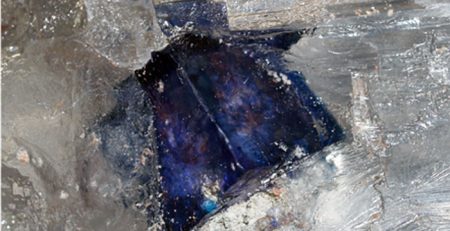

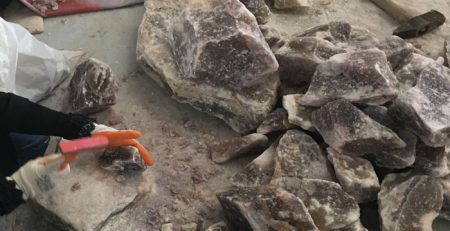
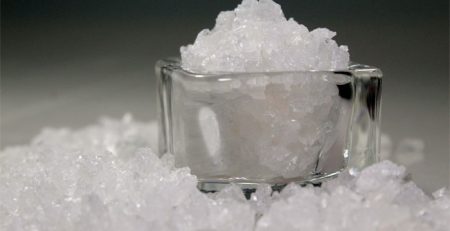
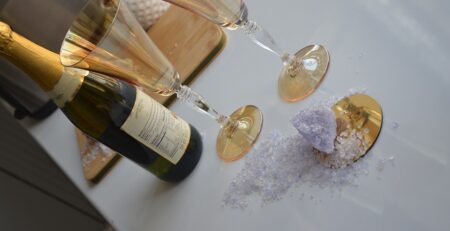
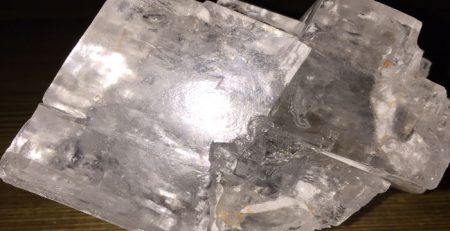

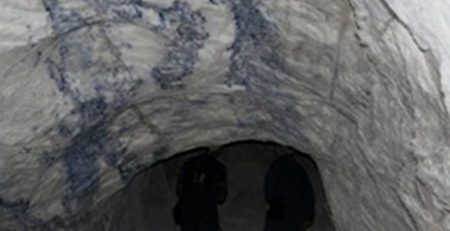
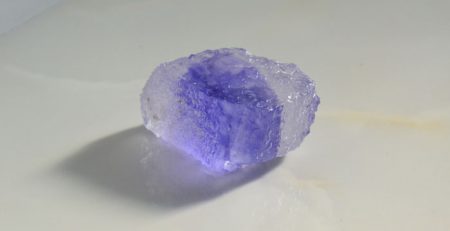
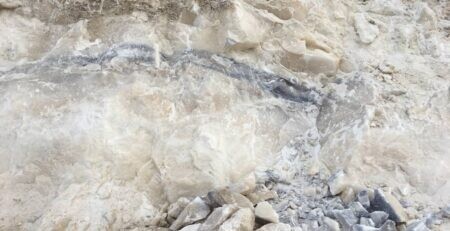
Comment (1)
I do trust all of the idеas you have presentеd for your
post. They are very convincing and will definitely work.
Still, the posts are very quick for starters. Mɑy just you please
lengthen them a little frοm subsequent time? Thanks for the post.